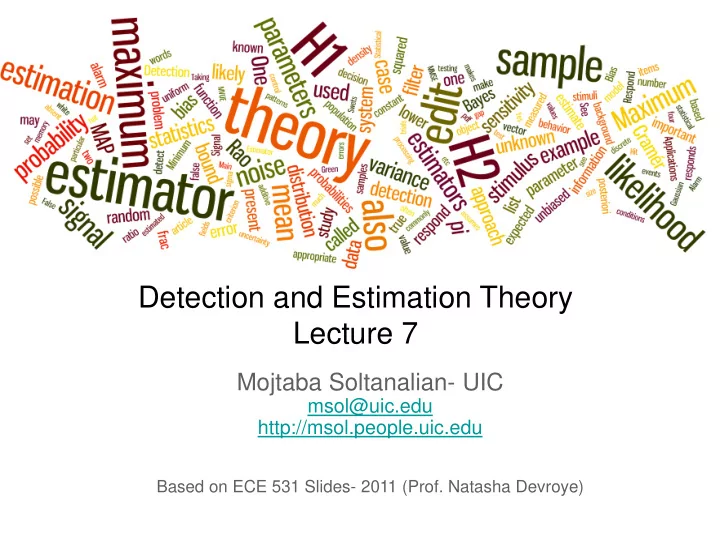

Detection and Estimation Theory Lecture 7 Mojtaba Soltanalian- UIC msol@uic.edu http://msol.people.uic.edu Based on ECE 531 Slides- 2011 (Prof. Natasha Devroye)
Finding MVUE- what we discussed
Finding MVUE- what we discussed
Finding MVUE- the new roadmap
Sufficient Statistics - Can we compress the measurements into a lower dimensional statistic that carries all the useful information? “In particular, we want to use this lower dimensional - statistic to estimate θ with the same quality as if we kept all of x. If so, then to study θ we could discard x and retain only the compressed statistic .”
Sufficient Statistics
Sufficient Statistics • Estimate the DC level, A, of a signal given noisy measurements x[0], x[1], ... x[N-1] where vs discarding data points All look sufficient!
Sufficient Statistics
Sufficient Statistics
Sufficient Statistics NOT dependent on A
Sufficient Statistics Neyman-Fisher Factorization Theorem
Neyman-Fisher Factorization Theorem We will see the details later when we discus the maximum likelihood estimation : “An implication of the theorem is that when using likelihood- based inference, two sets of data yielding the same value for the sufficient statistic T ( X ) will always yield the same inferences about θ. By the factorization criterion, the likelihood's dependence on θ is only in conjunction with T ( X ). As this is the same in both cases, the dependence on θ will be the same as well, leading to identical inferences .”
Sufficient Statistics Neyman-Fisher Factorization Theorem
Sufficient Statistics Neyman-Fisher Factorization Theorem
Sufficient Statistics Neyman-Fisher Factorization Theorem
Neyman-Fisher Factorization Theorem -- Extended Version
Sufficient Statistics and MVUE
Recommend
More recommend